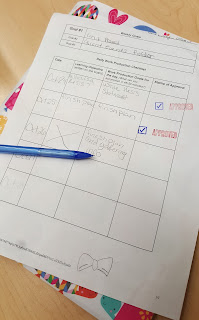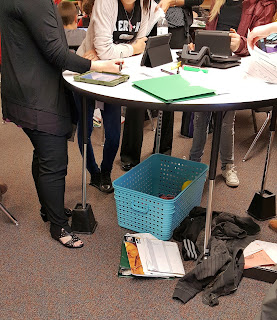As someone to teaches middle school American history, it is only fair that I present lessons with a neutral political discourse. My students do not need to know my political leanings, so I present both sides of the story. We are currently studying the Constitution, and in today's political climate, it is incredibly important for students to know what their rights are. They know that they have freedom of speech and the right to bear arms... and that's about it. I know that going through the Constitution bit by bit is incredibly annoying. What I did, instead, was utilize three different programs: Actively Learn, Socrative space race, and Adobe Spark Page.
I wanted the students to study the first three Articles of the Constitution, so I uploaded the Articles to Actively Learn with highlighted portions and questions built in (if you have an Actively Learn account, e-mail me at rbails@d49.org if you want a copy). It was my first time using Actively Learn, and I am now a fan. I've been asking myself why I haven't been using this earlier, especially considering other teachers have been touting how amazing it is. Using Actively Learn isn't any different than having the students read and answer questions, but it's just different. My students were incredibly engaged with the text and were focused during class. The students could not move on to the next question until they answered the previous question, and the students knew that the answer to the question was right above the question. I felt like Actively Learn is a great tool when it comes to primary documents or readings that may be difficult to understand or digest.
The next part of the lesson was to have the students do a "space race" on Socrative. I have done these in the past, and have found that they are better than Kahoot. I would not say the students are more or less excited or engaged, but Socrative forces the students to get the answers correct instead of racing to respond to the question the quickest. I gave the students describing statements about the twenty-seven Amendments of the Constitution, and they had to figure out which Amendment was being described. Again, not a new or super interesting lesson, but the students were figuring out what the Constitution says. The students were engaged with the text and filled out a handout in Notability as they quizzed through Socrative.
I have struggled with the Constitution unit every year that I have taught at Skyview. It just never turns out quite like I want. I feel like what I created this year was strong, and I will keep most of the lessons for next year. I think the students comprehended the ideas that I wanted, and I know that they were engaged with the ideas. I'm not sure I could ask more of teenagers learning about an 18th-century primary document.
Thanks for reading! I'll see you next week :)
- Rachel
@historicalipad
My Teacherspayteachers website












